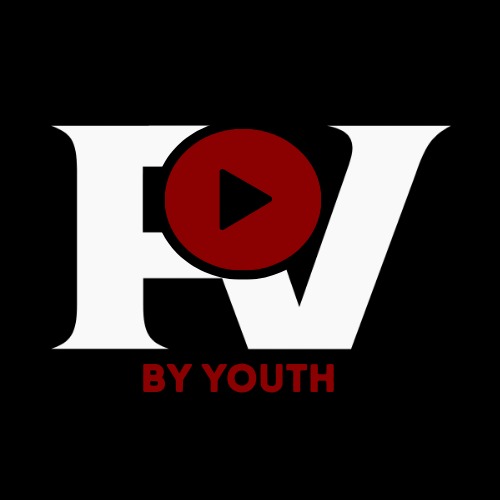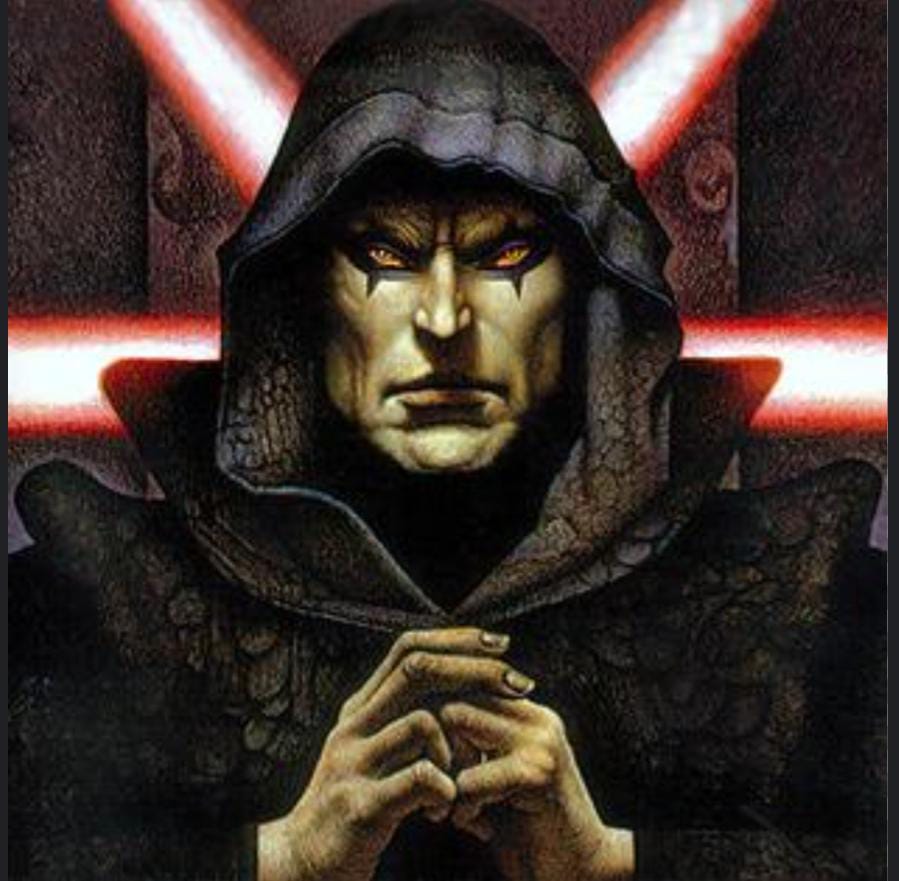Whether you are interested in Star Wars or not, it is nearly impossible for you to not know that there are two opposite “religions” based on two opposite halves of an energy field called “The Force”: The Sith and the Jedi, influenced respectively from the “dark” and the “light” sides of the Force. Now, if you are really passionate about it and go deeper in the lore, you’ll find out two mantras expressing the core beliefs of their respective religions: Codes of the Jedi and the Sith — the latter being the subject of this article.
But beyond fiction, can the Sith Code be seen as a reflection of real-world ideologies and human struggles for power, freedom, and meaning?
Before comparing this mysterious text, found in the expanded universe of an almost 50-year-old fandom, with modern ideologies; I want to talk a little about it. The Code of the Sith (or Qotsisajak in Sith language) was first authored on the planet Ziost by Dark Jedi Sorzus Syn almost 7000 years before the events of the Original Trilogy, and it contains the following lines:
Peace is a lie, there is only passion.
Through passion, I gain strength.
Through strength, I gain power.
Through power, I gain victory.
Through victory, my chains are broken.
The Force shall free me.
It is important what you understand from this 6-lined mantra. Does it just seem like a “cool” oath memorized by some weird acting space wizards, or a reflection of the past and future consequences of the human doctrines and ideologies of our real world? I believe it is the latter, and I invite you to interpret the words of Madam Syn not just as part of a fictional universe, but as a “mirror” reflecting certain ideas and tensions in our real world. While the Jedi code preaches peace, discipline, and detachment, its Sith peer embraces emotion, power, and liberation — values that have striking resemblances with many real-world beliefs and ideologies.
“Peace is a lie, there is only passion.”
The opening line claims that peace is artificial and maybe even “suppressive” (which is confirmed if you deepen the lore), rejecting the idea that peace is something genuine and sustainable. This, of course, reflects real-world skepticism toward so-called “false peace” —where states or governments maintain order by silencing oppositions or “hiding” and avoiding ongoing conflicts. If we look to our history, we can notice that this claim also overlaps with revolutionary movements or with their motives; people feeling that peace is just the mask of structural injustice, an abstract word used by the “elites” or those in power to maintain control. From Inca-Spanish mit’as and “presidencies” of British India to the “Democratic People’s” Republic of Korea, our past and present unfortunately creates space for this radical rejection of utopian ideals.
In the real world, many have argued that conflicts and tensions are inevitable — and even necessary — for social change. For example; in the writings of Karl Marx, who viewed class struggle as the engine of history, the Sith’s rejection of peace mirrors a belief that behind every quiet surface lies coercion, stagnation, or hypocrisy.
“Through passion, I gain strength.”
In the Code, we can clearly see that passion is not seen as a weakness: it is considered the first step toward strength. Where Jedi seek to suppress emotion, passion and desire by valuing detachment in their Code and practices; the Sith embraces and praises them. They see them as means of motivation for growth and change, and they try their best to separate their doctrine from those praising rationalist traditions.
In our world, Romanticism in the 18th and 19th centuries championed emotion, individuality, and rebellion against cold rationalism. Even today, some modern self-help movements and success philosophies (for example, the hustle culture) often emphasize following your passion and desire as the path to success. But again, the question remains: Is passion a path to purpose, or a force that blinds us?
“Through strength, I gain power.”
The Sith Code implies that power is not given: it is earned through strength and struggle, which in turn offers us victory [see the following line of the Code], a sort of Darwinian worldview. Besides, it also reflects a meritocratic — or even elitist — worldview: only those who are strong and successful deserve to rule, while those who refuse to struggle and rise are destined to serve and submit, to remain “chained”.
This belief also echoes in modern capitalism, where success is often equated with personal worth; and in militarist or authoritarian ideologies, ranging from the Spartan state ideology all the way to Fascist Italy, where strength is considered the highest virtue. It also mirrors the Nietzschean idea of the “Übermensch” (Over-man), the individual who rises above societal norms to impose their own values. But it is important to remember that such systems risk dehumanizing those who are left behind or deemed unworthy.
“Through power, I gain victory.”
Throughout the Sith Code; you may have noticed that there is no mention of good or evil, that’s because the Sith just don’t care what’s “good” or “bad”! They are only interested in power, freedom and victory through personal empowerment. One of the greatest examples of this behavior is without a doubt Dooku, the Count of Serenno known as Darth Tyranus (which is his Sith name). His reason to join the Dark side of the Force was purely because of his realization about the Light side: The Jedi of his time were no longer guardians of peace, but puppet warriors serving a Republic that is corrupted by a handful of senators trying to make a fortune while exposing their people to starvation. His efforts, besides preparing for the Grand Plan of the Sith, were to offer aid to those “opting out” of the Republic, while strengthening his position in the leadership of these “Separatists”.
On the other hand; this message aligns with moral relativism: the ends justify the means, the values outcomes over ethics. In many ways, this also reflects Machiavellian politics: those who lead governments must prioritize the stability of the regime over ethical concerns, the rulers must sometimes do “evil” to achieve “good” results. We see this echoed in real-world diplomacy, warfare, and politics, where leaders often justify harsh measures as necessary for the greater good. But at what cost? When power becomes the only moral compass, how do we judge whether a cause is just or merely victorious?
“Through victory, my chains are broken.”
The code emphasizes achieving freedom (breaking chains) through a cycle of passion → strength → power → victory. This belief mirrors many revolutionary or authoritarian ideologies in our world that claim power is necessary to overcome oppression (or servitude). Some modern political ideologies, especially fascist ones, also valorize personal strength and “conquest” over collective ideals.
“The Force shall free me.”
The Sith Code ends with “The Force shall free me”, a line that positions power as the ultimate path to liberation. This closely resembles many real-world ideologies that justify the pursuit of power in the name of freedom — whether revolutionary, nationalist, or even capitalist (for example, take a look to the outcomes of the French revolution).
From anti-colonial movements that sought strength to overthrow imperial rulers, to ultra-libertarian worldviews where state power is seen as the enemy of individual freedom, the idea that power is a prerequisite for liberation is deeply rooted in history. But it also raises a moral question: When does the pursuit of freedom through power risk becoming oppressive itself?
To conclude; the Sith Code is more than a fictional mantra recited by “space wizards” in black robes. It’s a symbolic distillation of ideas and tensions that have existed throughout human history: the pursuit of freedom through domination, the glorification of strength over empathy, the rejection of imposed peace in favor of raw, emotional self-assertion. Whether in fascist regimes, hyper-capitalist mindsets, or militarist traditions, we find echoes of the Sith worldview all around us — not as a universal truth, but as a seductive alternative to more restrained moral frameworks. In a world where power often decides who writes history, where success sometimes overshadows justice, and where passion drives both progress and destruction, perhaps the Sith Code resonates not because it is right — but because it is quite realistic. As said by Darth Bane:
“The dark side is about emotion. It’s about passion—passion that can be harnessed to accomplish anything. The Jedi refuse to understand this. They fear it. And that is why they are weak.”
Whether we embrace that passion or choose to temper it is a question each human being must answer. The Sith may offer freedom through power, but at what cost? And more importantly: is power without compassion truly freedom at all?
So, the next time you hear about the Sith, change your point of view: are they really emotional and greedy losers wearing black and having a red blade; or is there a greater cause behind those yellow eyes? Do those eyes belong to someone who wants everything; or to someone who lost it all, who is ready to lose it all for the Ideals?
References
Karpyshyn, Drew. Rule of Two. Del Rey, 2007.


